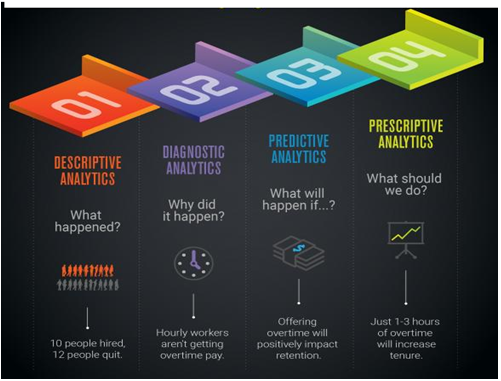Organizations are moving from simplest stages of HR reporting to more mature “predictive” analytics. In fact, the percentage of companies that feel fully capable of developing predictive models is increasing. HR teams need to engage in the most advanced form of data analysis: “prescriptive analytics.”
HR professionals must understand where they currently are on HR analytics learning curve, and how to mature their analytics capabilities. Data-driven insights is the need of the day and HR teams should aim to advance from simply describing HR problems to actually prescribing solutions for them.
Stages of HR analytics and the increasing value is listed below
Stage 1
The HR department seems to be stuck in ‘traditional’ operational reporting. This means that they report traditional metrics such as headcount, attrition, labor cost and training cost. These operational reports are usually generated with the use of a Human Resources Information System (HRIS).
Stage 2
This stage is known as the “descriptive and diagnostic analytics” phase. The data team’s queries are based on requests from HR or other department leaders, and tend to focus on identifying current talent trends, such as high turnover.
While descriptive and diagnostic analytics can help you identify current problems your team might be missing, these forms of big data analysis don’t necessarily help you prevent or solve those problems.
Stage 3
Companies use “predictive analytics” to determine future trends and even test “what-if” analyses in order to understand the impact of decisions before implementing them. For example, an organization might explore the query, “If we added overtime pay, how would that impact turnover?”
Stage 4
While predictive analytics provides forecasts for what could happen, prescriptive analytics forecasts what actions should be taken to address those trends, such as finding that just one to three hours of overtime a week increases tenure.
Prescriptive analysis is the most valuable type of data analysis for your organization because it provides actionable, data-backed plans you can present to leadership—representing HR as a truly strategic and influential department.


